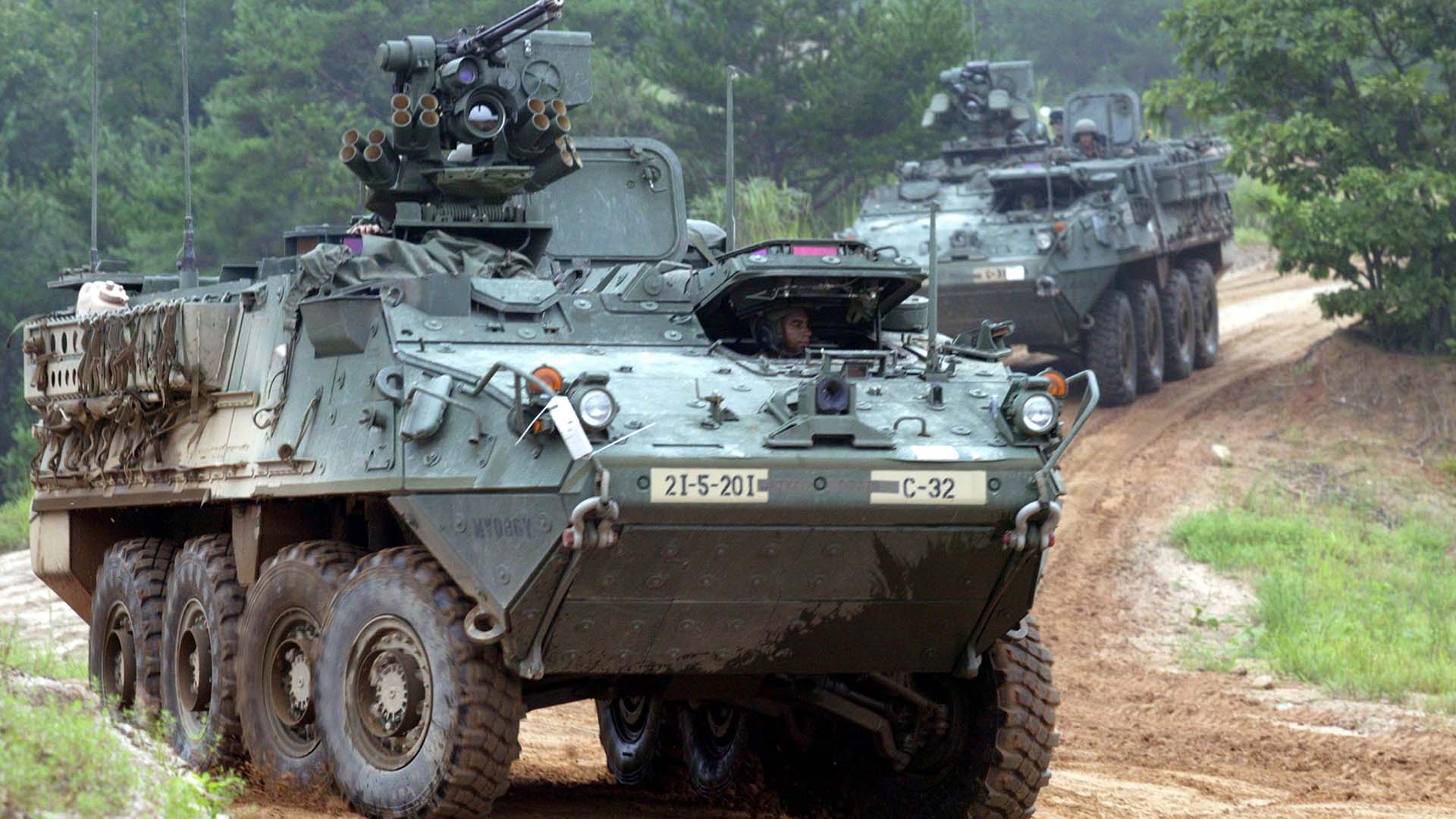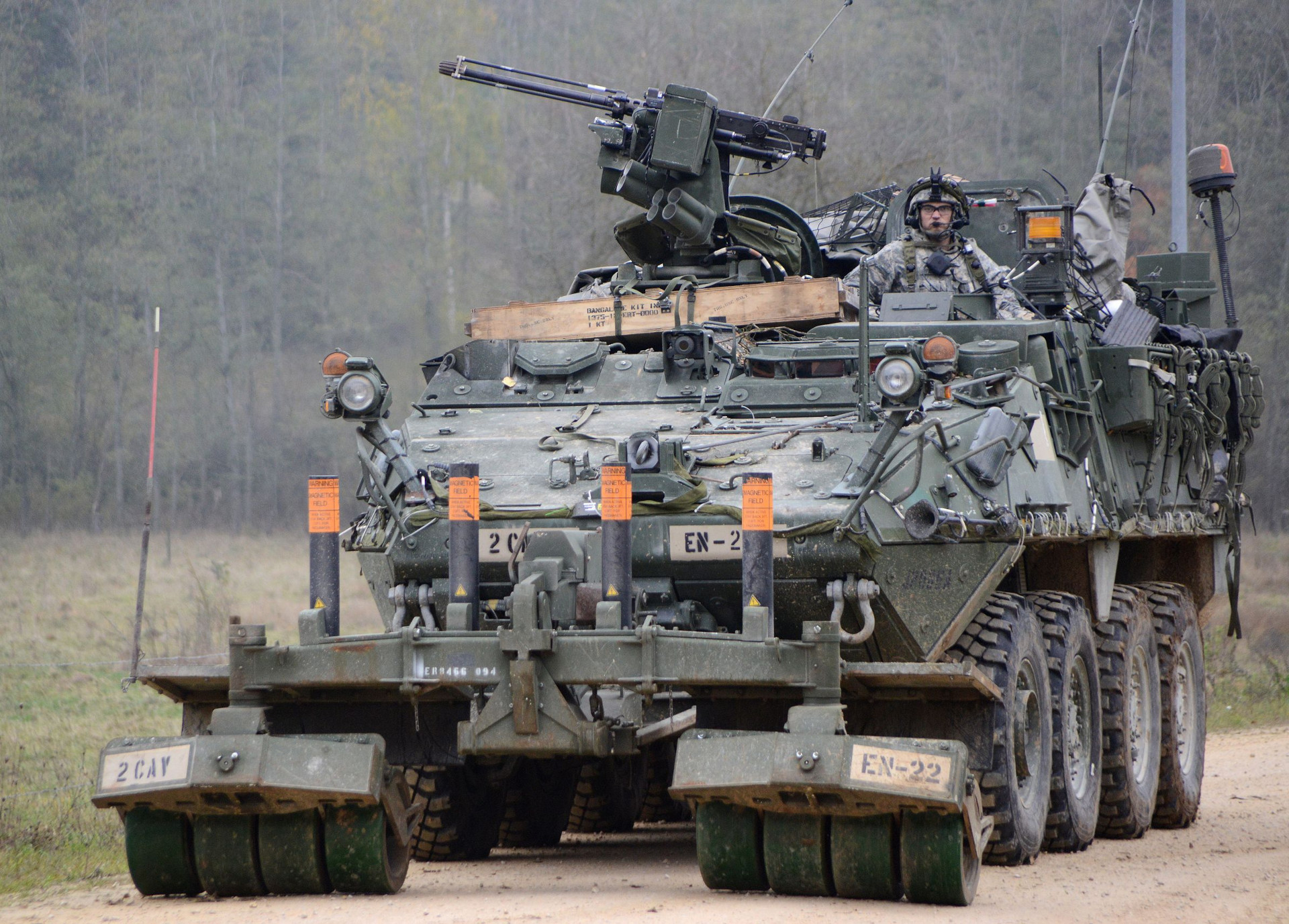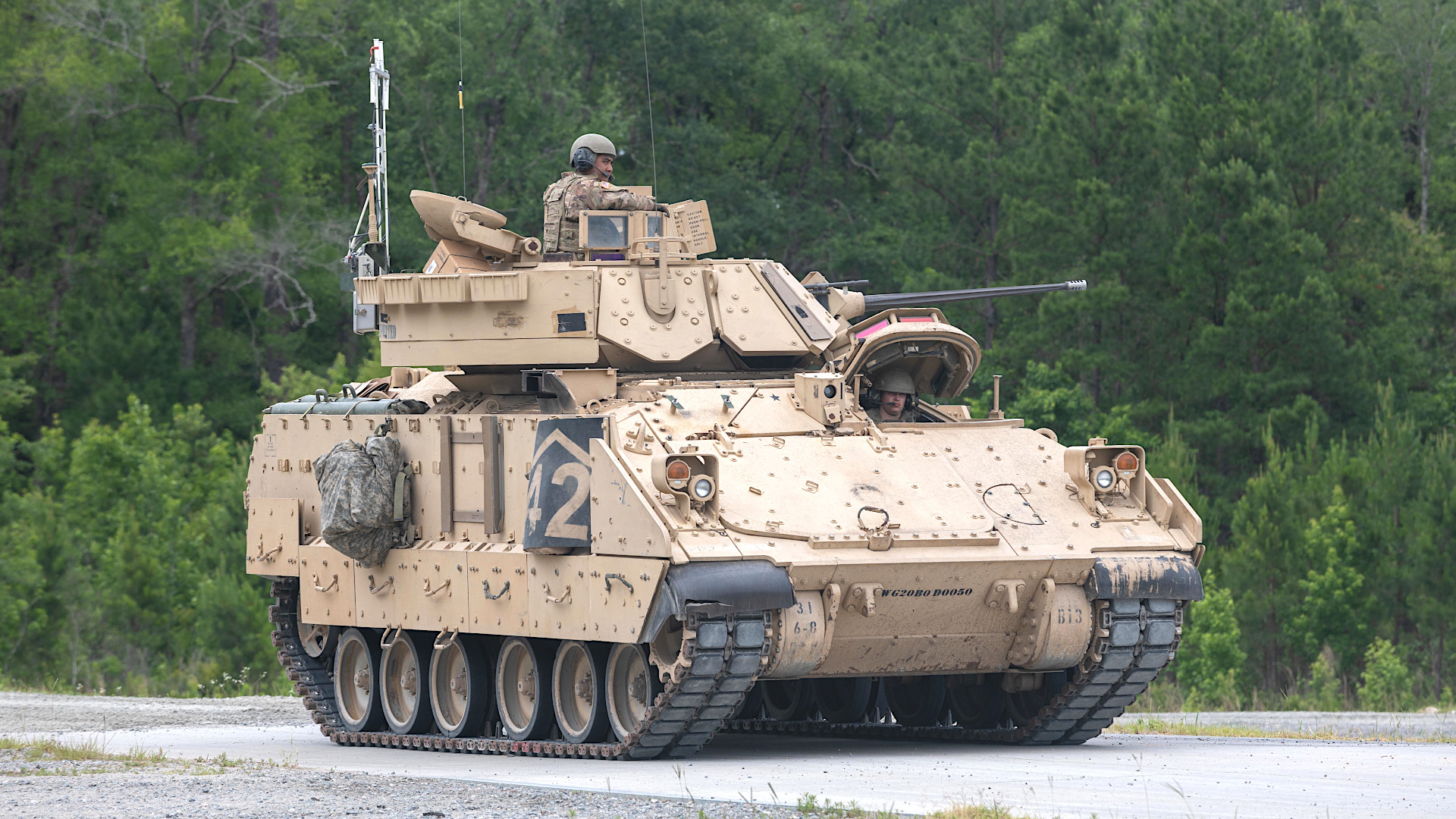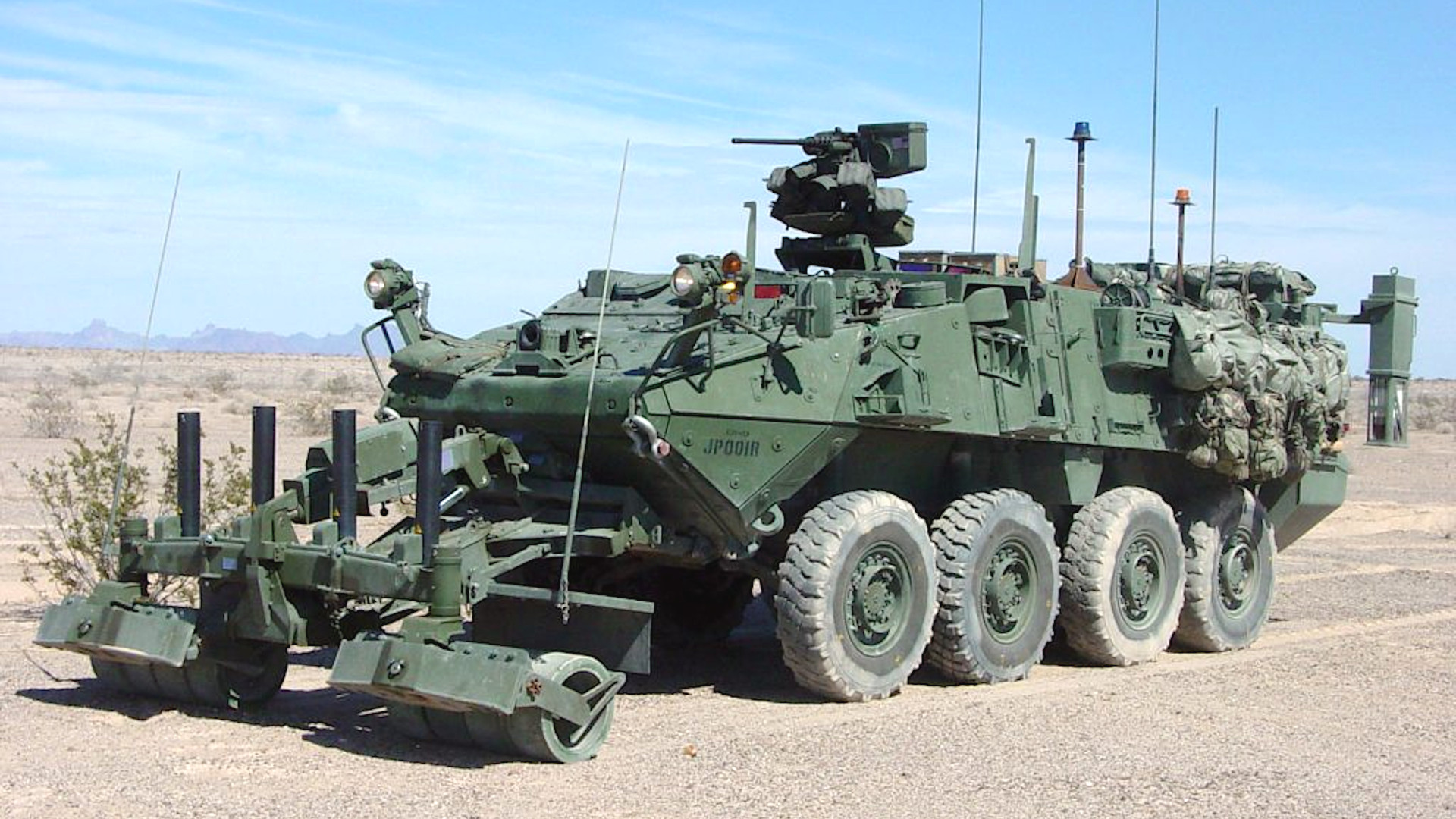The Pentagon has announced a new tranche of military assistance for Ukraine, valued at $2.5 billion. It includes many 8×8 Stryker wheeled armored vehicles, something that hasn’t been found in any previous U.S. aid packages for Ukraine, and landmine-defeating rollers to go with them. More tracked Bradley Fighting Vehicles, Avenger air defense systems, and a slew of other missiles and artillery ammunition, are also included, among other things.
This new aid package is a so-called “Presidential Drawdown.” The President of the United States, currently Joe Biden, has the authority to provide aid to friendly countries in certain circumstances by ‘drawing down’ straight from U.S. military stocks, as you can read more about here.
The list of the package’s full contents, as provided by the Pentagon, is as follows:
- Additional munitions for National Advanced Surface-to-Air Missile Systems (NASAMS);
- Eight Avenger air defense systems;
- 59 Bradley Infantry Fighting Vehicles (IFVs) with 590 TOW anti-tank missiles and 295,000 rounds of 25mm ammunition;
- 90 Stryker Armored Personnel Carriers (APCs) with 20 mine rollers;
- 53 Mine Resistant Ambush Protected Vehicles (MRAPs);
- 350 High Mobility Multipurpose Wheeled Vehicles (HMMWVs);
- 20,000 155mm artillery rounds;
- Approximately 600 precision-guided 155mm artillery rounds;
- 95,000 105mm artillery rounds;
- Approximately 11,800 120mm mortar rounds;
- Additional ammunition for High Mobility Artillery Rocket Systems (HIMARS);
- 12 ammunition support vehicles;
- 6 command post vehicles;
- 22 tactical vehicles to tow weapons;
- High-speed Anti-radiation missiles (HARMs);
- Approximately 2,000 anti-armor rockets;
- Over 3,000,000 rounds of small arms ammunition;
- Demolition equipment for obstacle clearing;
- Claymore anti-personnel munitions;
- Night vision devices;
- Spare parts and other field equipment.
The first-time inclusion of Strykers, and 90 of them, is immediately notable. Reports that U.S. officials were considering adding these vehicles to the next U.S. aid package first emerged more than a week ago.
It remains unclear exactly what of the multitude of Stryker variants Ukraine may now be in line to receive. The Pentagon’s description of them here as “Armored Personnel Carriers” indicates that at least a portion of the vehicles will be in the basic Infantry Carrier Vehicle (ICV) configuration, which is not surprising. ICVs have a crew of two, space for nine more troops, and are typically armed with a .50 caliber machine gun or a 40mm automatic grenade launcher in a remotely operate mount on top of the vehicle.

The specific mention that 20 mine rollers will be provided could point to some of the Strykers being Engineer Squad Vehicles (ESV). Mine rollers are designed to detonate various kinds of mines prematurely, protecting the vehicle they are attached to and its occupants. Within the Stryker family, these variants are most typically associated with mine-clearing equipment – which could be very valuable for Ukrainian forces on the offensive – and otherwise configured to better support various combat engineering tasks.

You can read all about what Strykers of all types might bring to the fight in Ukraine in this recent War Zone feature.
When it comes to heavier armored vehicles, the 59 additional Bradleys in this package will more than double the number of those tracked vehicles that Ukraine is set to receive. In addition to the protection they offer for crews and other personnel riding within, these vehicles are armed with 25mm automatic cannons and TOW anti-tank missile launchers, and also have significant night vision and infrared sensor capabilities. You can read more about the impacts they might have on battlefields in Ukraine here.

“The 59 Bradley IFVs included in this package, together with the 50 Bradleys previously committed on January 6, and the 90 Stryker APCs will provide Ukraine with two brigades of armored capability,” the Pentagon’s press release about this new aid package adds.
The dozens of MRAPs and hundreds of Humvees will provide Ukrainian forces with a big leap in protected mobility.
As expected, the U.S. military’s initial decision to send four Avenger air defense systems to Ukraine back in November 2022 was only the beginning. The eight additional examples in this aid package bring the total of these systems, which are armed with Stinger heat-seeking short-range surface-to-air missiles and .50 caliber M3P machine guns, that the Ukrainian military is set to receive, to 12.

Avenger offers valuable point defense capabilities against various aerial threats, including drones. They could be used to protect various critical sites or assets, including higher-tier air defense systems, such as the Patriots that Ukraine will be getting from the United States and others.
On the air defense side, this particular package also includes more “munitions for National Advanced Surface-to-Air Missile Systems (NASAMS).” Ukrainian forces have received NASAMS from the United States. Canada recently announced that it would purchase more of these systems to transfer to Ukraine.
While the system’s launchers can fire a variety of interceptors, the available evidence so far only indicates that Ukrainians have received variants of the AIM-120 Advanced Medium-Range Air-to-Air Missile (AMRAAM) to go with its examples. The War Zone has explored in depth in the past how these missiles may be just as significant an addition to Ukraine’s arsenal as the rest of the other components of NASAMS.

Air and missile defense capabilities remain in high demand, in general, in Ukraine, which continues to be subjected to Russian missile strikes on a regular basis. “Additional NASAMS munitions and Avenger air defense systems to help Ukraine counter a range of short and medium range threats and bolster Ukraine’s layered air defense,” the Pentagon’s press release about this new aid package said.
Additional radar-busting AGM-88 High-speed Anti-radiation missiles (HARM) will help the Ukrainian Air Force continue to suppress and destroy Russian air defense assets, too. The U.S. government quietly helped its partners in Ukraine integrate the AGM-88s onto their Soviet-designed MiG-29 Fulcrum and Su-27 Flanker fighter jets last year, and the missiles have since become something of a household name.
The bulk of the remaining items in this aid package consists of various kinds of ammunition.
Ukrainian forces have already made very good use of precision-guided rockets for their American-supplied M142 High Mobility Artillery Rocket Systems (HIMARS), which can also be used in variants and derivatives of the M270 Multiple Launch Rocket System (MLRS) that their forces have received from other countries. More of these munitions will only be a boon.
It is worth noting that there have been recent reports that Ukraine is likely to receive Ground-Launched Small Diameter Bombs (GLSDB), another kind of precision-guided munition that HIMARS and MLRS launchers can fire, from the United States, but they are not specifically mentioned here. While they could be included in the “additional ammunition” for those systems in this package, this is unlikely given that it is a ‘draw-down.’ The U.S. military is not an operator of GLSDB and does not have those weapons in its stocks. It is more likely that the U.S. government, if it is expecting to provide those munitions to Ukraine, would do so through the separate Ukraine Security Assistance Initiative (USAI).
Much of the fighting in Ukraine is currently an artillery slug-fest, and there have been reports of shortages of shells impacting Ukrainian and Russian forces. So, more 155mm and 105mm shells will be particularly important for ensuring Ukraine’s artillery units can continue to provide critical fire support and otherwise harass their opponents.
All of this is in addition to a steady stream of new aid pledges for Ukraine from a number of other countries. Just in the past few weeks, the United Kingdom, France, Poland, Sweden, and others have confirmed plans to send tanks and other heavy armored vehicles, self-propelled howitzers, and much more to bolster the Ukrainian armed forces’ capabilities.
This comes as the Ukrainian government and its international partners increasingly warn that the Russian military is preparing to launch one or more major offensives in the spring. While there are certainly questions about the quality and quantity of additional forces, and materiel to equip them, that Russia will be able to muster in the coming weeks, there are concerns that even a surge of lower-quality units could overwhelm Ukrainian defenders.
American officials and those in other countries have made clear that new military aid announcements for Ukraine are also intended to show their unwavering commitment to this endeavor after nearly a year of conflict.
“As Ukraine pushes back Russia’s forces, we remain #UnitedWithUkraine ,” U.S. Secretary of State Antony Blinken tweeted out tonight in regard to the new American military assistance package.
More substantial aid announcements are expected to come in the next day or so following a U.S. military-hosted meeting of the so-called Ukraine Defense Contact Group at Ramstein Air Base in Germany tomorrow.
The new American aid package announced tonight with its Strykers, Bradleys, Avengers, and more, is already a massive new pledge to support Ukraine’s ongoing fight against invading Russian forces.
Contact the author: joe@thedrive.com
